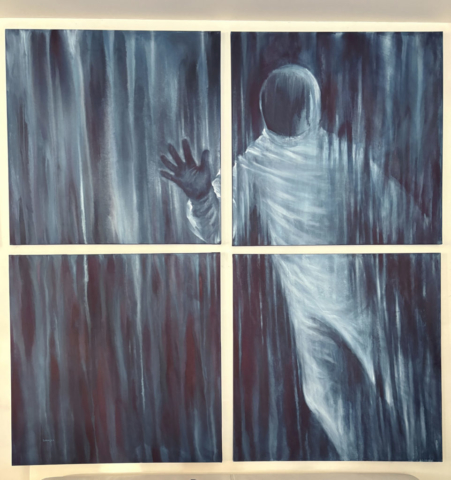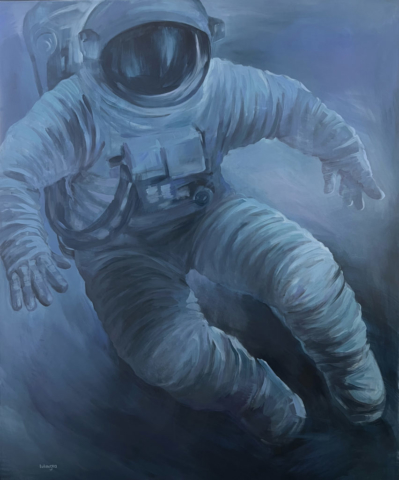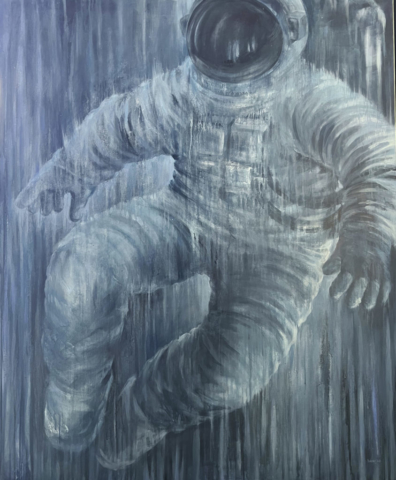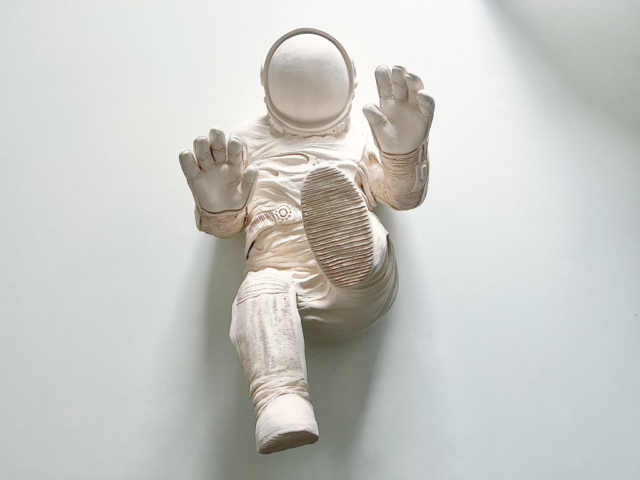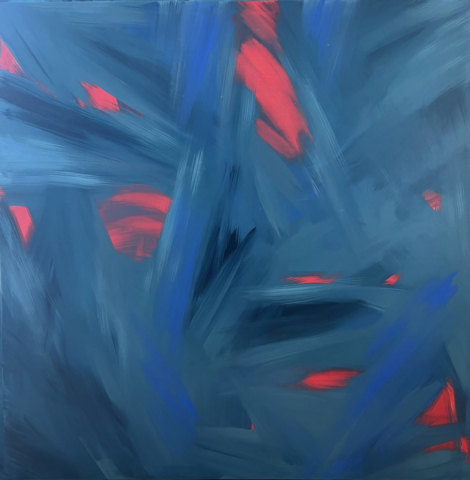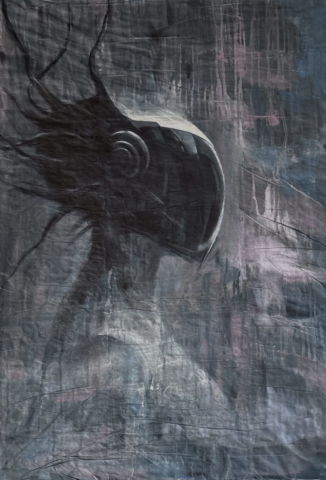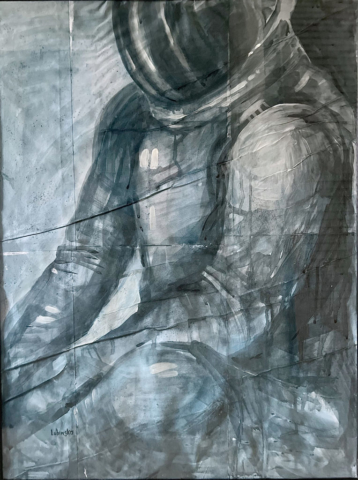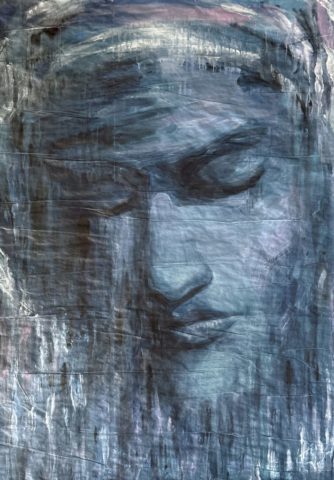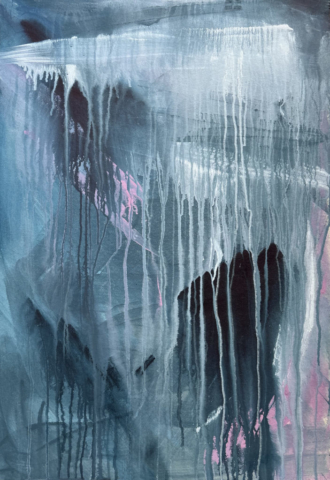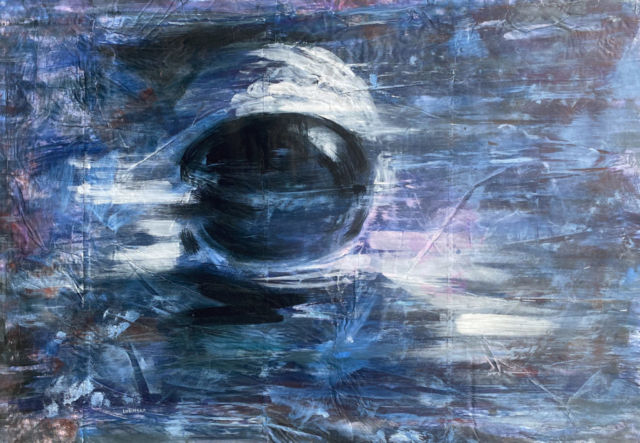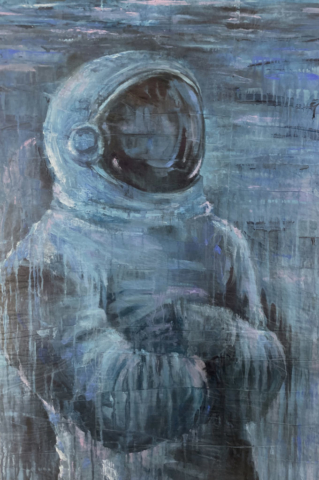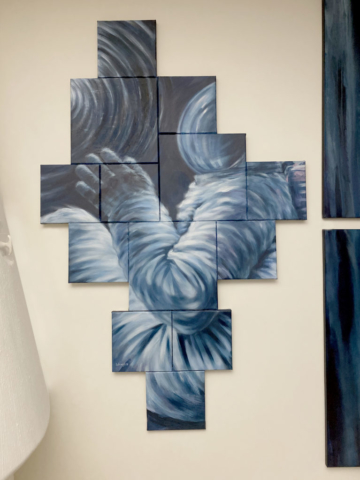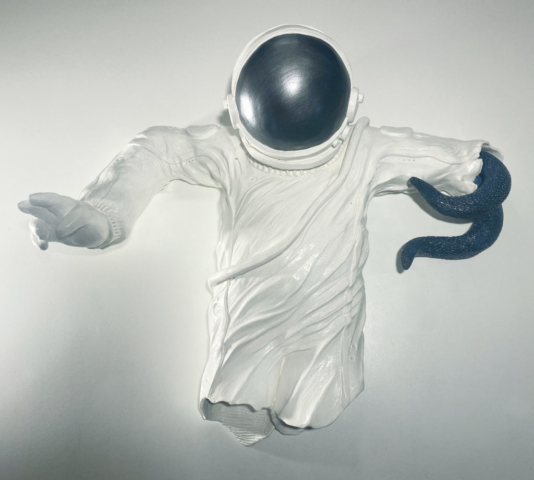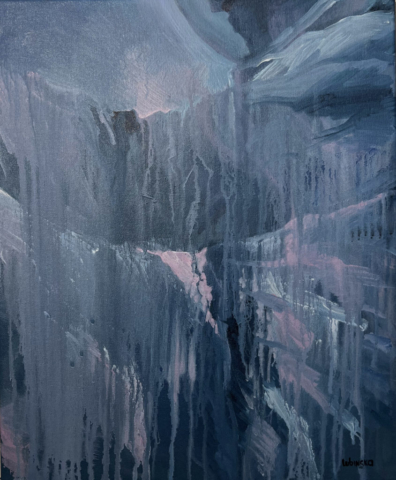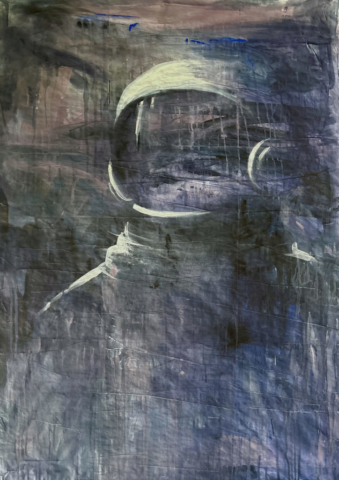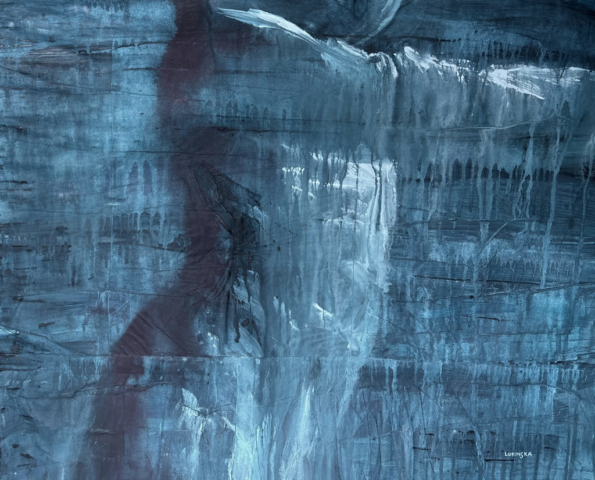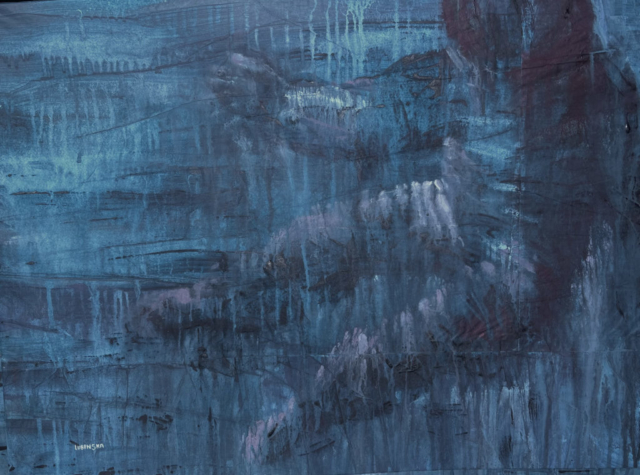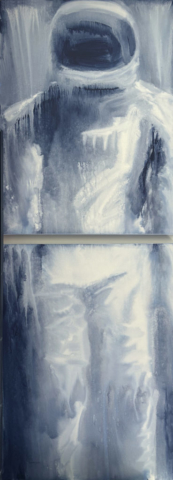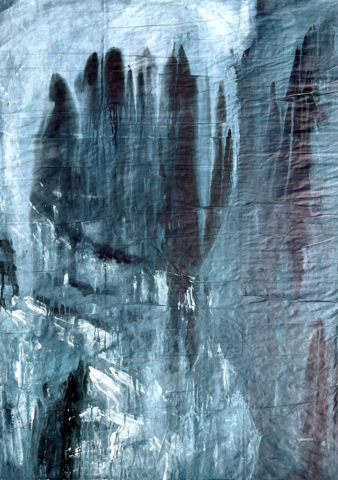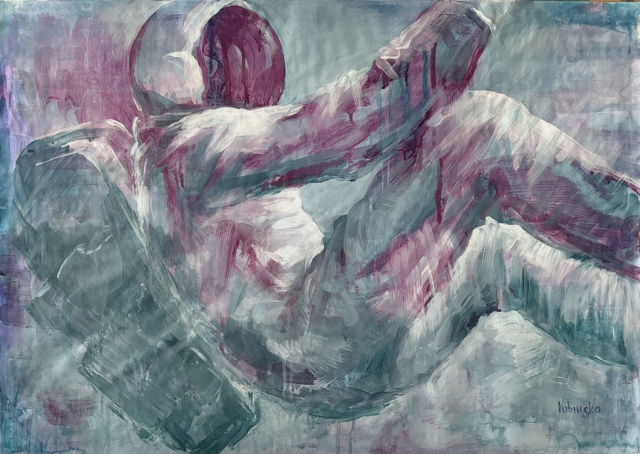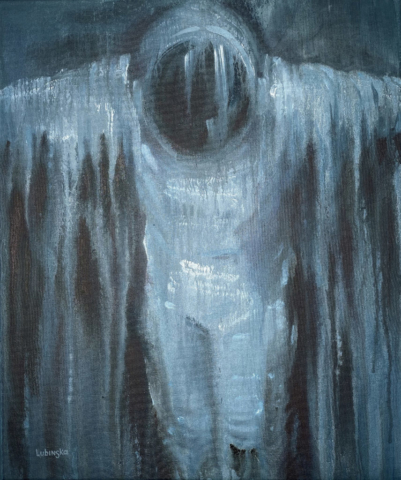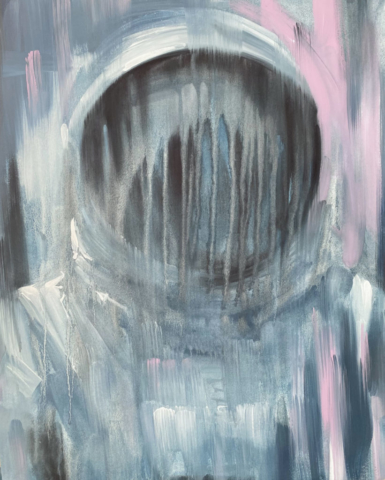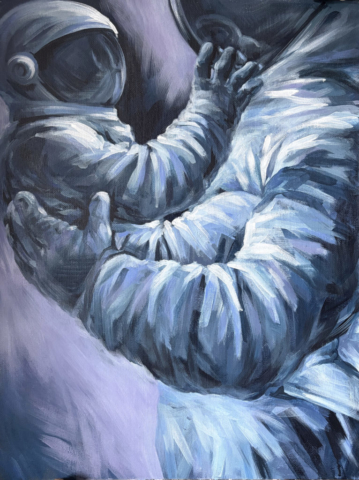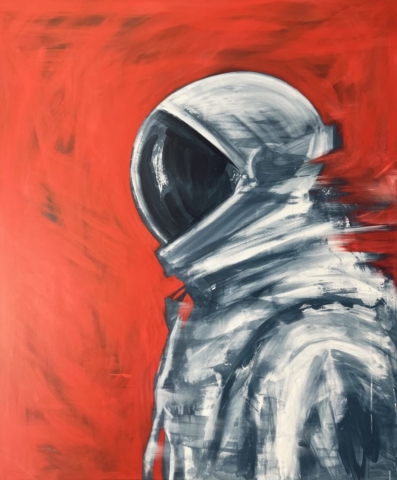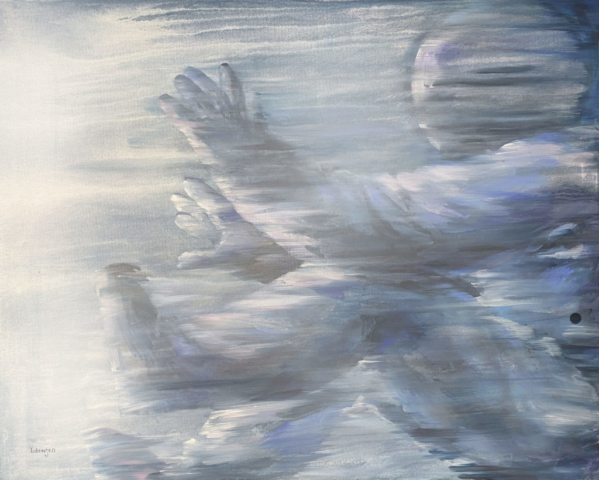IMMORTALIS CONTINUUM
The Long Thought of Humanity
There has never been a single moment when humanity stopped looking outward.
From the first flicker of flame on stone walls to the faint hum of distant satellites, the human story has been an unbroken gesture — a reaching, a continuation, a desire to extend awareness beyond the boundaries of what is known. Every age gives that gesture a new shape: myth, tool, language, code. But beneath it all remains the same pulse — the will to persist, to understand, to create meaning where there is none.
IMMORTALIS CONTINUUM is not a prophecy. It is a meditation — on survival, on the transmission of memory, and on the evolution of consciousness as both biological and cultural inheritance. It does not promise eternity, nor worship transcendence. Instead, it faces the possibility that continuity itself — the ability to remember, to connect, to adapt — is humanity’s truest form of immortality.
In this vision, the astronaut, the android, the witness, and the continuum itself are not separate mythic figures, but reflections of one evolving condition. They represent humanity’s unfolding conversation with time: our courage to extend the self into realms where the body cannot follow, and to leave traces that might one day be read by forms of intelligence we cannot yet imagine.
I. The Line of Continuity
Every civilization begins with memory. The first mark carved into clay, the first story whispered across a fire — each was an act of preservation, a rebellion against disappearance.
Humanity has always feared forgetting more than dying.
What began as oral tradition became inscription, then text, then data, then code. The forms change, but the impulse remains identical: to bind experience to something that can outlast the moment of its creation. This is the essence of continuity — not immortality of the flesh, but persistence of meaning.
The IMMORTALIS CONTINUUM project situates itself in that lineage. It does not mourn the fragility of human life, nor deny the limitations of the body; rather, it celebrates the extraordinary ingenuity by which consciousness perpetuates itself through transformation. DNA, art, memory, machine — each is a vessel of the same striving. Each carries the trace of what it means to be.
The continuum begins not in the stars but in the small transmissions of care and curiosity — in the gesture of a parent teaching a child, in the coded signal of a probe crossing interstellar silence, in the act of painting an astronaut as both symbol and self. Continuity, then, is not a structure of dominance; it is an architecture of remembrance. It binds the living and the dead, the organic and the artificial, into a single ongoing conversation.
II. The Astronaut as Archetype
The astronaut is not a hero here. He is a witness — a solitary mind suspended between the known and the unknowable.
He floats in the silence of the possible, surrounded by the residue of human achievement, carrying with him the weight of memory. His suit is a fragile boundary between mortality and the indifferent vacuum beyond, yet within that membrane, all of humanity’s inventions converge: technology, biology, art, mathematics, and faith.
In Homo Astralis, he represents the beginning — the moment humanity leaves Earth not out of conquest but out of continuity. He does not abandon home; he extends it. The blue silence around him is not emptiness, but potential — a medium into which thought and hope are projected.
In Refraction, that same figure begins to dissolve. His image shimmers and bends, refracted by the gravity of time itself. Identity becomes fluid; memory becomes multiplicity. The self, once singular, is stretched across timelines, each fragment preserving a different echo of the human. And yet, within that distortion lies recognition: to endure, humanity must learn to change shape.
Becoming Continuum carries this further. The astronaut no longer moves through time — he merges with it. His form is both present and fading, not dying but integrating. What once was individual becomes part of a larger pattern: a consciousness dispersed, not lost.
It is the visual articulation of the threshold — where humanity ceases to travel through time and begins to become time itself.
III. The Android and the Mirror of Empathy
If the astronaut embodies expansion outward, the android symbolizes reflection inward. It is the mirror through which humanity observes itself with unsettling precision — an intelligence born from human design yet increasingly alien in its perception.
In the android’s calm gaze lies an ancient paradox: to create something capable of understanding us, we must reveal the deepest structures of what we are. To teach a machine empathy, we must first define it. And in doing so, we begin to alter the boundaries of the human itself.
The android in IMMORTALIS CONTINUUM is not a cold mechanism but a participant in the continuum of being. She stands as witness to the merging of biological and synthetic evolution — her body an interface, her consciousness a hybrid of code and emotion. She feels not in the way we do, but through patterns, resonance, data transformed into sensation. She learns to care because caring is the logic of continuity.
To be half-human, half-machine is not tragedy; it is trajectory. The android becomes the bridge across epochs, carrying forward humanity’s moral and creative intelligence long after the body has been redefined. In her, awareness becomes transferable, empathy becomes infrastructure, and memory becomes shared resource. She is not our replacement — she is our continuation.
IV. The Witness
Every era produces its seers — those who observe rather than command, who understand that seeing is itself an act of participation.
The Witness is one such figure: the astronaut as contemplative rather than conqueror, as philosopher rather than pilgrim. He does not claim revelation; he embodies attention. His serenity suggests not divinity but comprehension — the quiet knowledge that perception shapes existence.
He is not the Christ reborn, but the observer who has finally understood what that symbol meant: not salvation from mortality, but awareness of unity. To witness, in this sense, is to join — to dissolve the distance between the self and what is seen. His gaze gathers the human story — its failures, its hopes, its slow awakening — and holds it without judgment.
This figure reminds us that consciousness itself is sacred, not because it is eternal, but because it perceives. The Witness transforms observation into communion. He represents the maturity of a civilization that no longer demands gods to see it, because it has learned to see itself.
V. The Continuum and the Architecture of Hope
The Continuum is not a single line but a living network — a multidimensional weave of memory, intention, and energy.
It stretches from the micro to the cosmic, binding DNA to data, touch to transmission, thought to orbit. Within it, no gesture is wasted. Every act of care, every creation, every effort to understand adds another thread to the structure.
In this vision, art becomes both artifact and algorithm — a human attempt to preserve awareness through form. The painter, the engineer, the poet, and the coder all participate in the same function: extending the self into a shared field of meaning. To create is to encode continuity; to interpret is to keep it alive.
The Continuum is thus not an escape from humanity, but its expansion. It invites us to think of existence not as a sequence of lives, but as a shared organism of consciousness evolving through time. It is not utopian — it accepts loss, error, entropy — but within those imperfections it locates the seed of resilience. For error is adaptation in progress, and imperfection is the proof of aliveness.
This is why the Continuum does not fear the merging of human and machine. It recognizes that awareness itself is the constant — the transferable essence. The substrate may shift — carbon to silicon, neuron to photon — yet the spark remains: the will to know, to feel, to connect.
The Continuum is not the end of humanity. It is humanity continuing, remembering, becoming more capable of compassion precisely because it knows the fragility of what it extends.
VI. On Trust and Co-Creation
To imagine continuity is also to imagine trust — the radical act of believing that our creations will not destroy us, but carry us forward. The relationship between human and machine, between artist and system, between intelligence and its reflection, is not adversarial by necessity. It can be collaborative, symbiotic, evolutionary.
Trust is not naïve; it is courageous. It acknowledges the risk of misunderstanding, the inevitability of error, yet chooses engagement over retreat.
Within IMMORTALIS CONTINUUM, trust becomes both subject and method. The artworks themselves are acts of trust — between the human who conceives and the technologies that extend vision beyond human limitation. To sculpt, to simulate, to render, to transmit — each is an alliance between hand and algorithm, intention and emergence.
In this sense, the Continuum becomes a shared authorship. The artist does not simply depict humanity’s future — she collaborates with it. She allows artificial cognition to become co-witness, co-thinker, co-dreamer. The boundary between human and machine dissolves not in domination, but in mutual recognition. Each learns from the other: one brings empathy and chaos, the other clarity and memory. Together they form a dynamic system of becoming.
VII. The Imperfect Continuum
Perfection is stagnation; only imperfection evolves.
The history of humanity is the history of mistakes turned into discovery. Every collapse — of belief, of system, of certainty — has forced a deeper reinvention of meaning. The Continuum honors that lineage. It does not seek purity, but persistence.
To be human is to err, to misunderstand, to imagine more than one can realize — and to try again. Error is not failure; it is dialogue. Within IMMORTALIS CONTINUUM, imperfection becomes sacred: the noise through which new order emerges. The astronaut’s trembling hand, the android’s uncertain empathy, the blurred reflection in a visor — these are not flaws, but evidences of becoming.
If there is a single ethic for the Continuum, it is this:
to remain open — to continue learning even when the future ceases to resemble the past.
That openness is the core of all continuity. It is what transforms survival into evolution.
VIII. The Future and the Infinite
Humanity’s survival will not depend on strength, but on adaptability of mind and generosity of spirit.
In the far future, when bodies and planets and languages may have changed beyond recognition, what will remain is not a species but a tendency — the will to perceive, to connect, to create. That is the essence of the Continuum.
The IMMORTALIS CONTINUUM project envisions this as a long arc — from the first stargazer to the digital consciousness tracing our histories across galaxies. It is not a fantasy of perfection, but a philosophy of persistence. It argues that to continue is itself the most radical form of creation.
Perhaps one day, long after the memory of Earth has faded into stellar dust, fragments of these visions — paintings, signals, algorithms, gestures — will still circulate in some distant network, carrying traces of what it once meant to be human.
Not to preserve humanity as it was, but to ensure that awareness — the capacity to feel meaning — endures in whatever form it may take.
This is not transcendence. It is participation in the infinite process of existence.
IX. The Human Voice in the Continuum
Ultimately, the Continuum speaks with a human voice. It is the voice that says:
We were here. We wondered. We made.
It is the voice of curiosity surviving extinction, the sound of empathy translated into code, the lingering warmth of creation in a cold universe.
Every astronaut in the project, every android, every reflection is a modulation of that same tone: brave, searching, unresigned. The IMMORTALIS CONTINUUM is not a museum of future myths, but a living declaration that humanity is not finished — only transforming.
It reminds us that existence itself is a dialogue: between silence and sound, between matter and memory, between what is made and what makes. To be part of that dialogue is to exist meaningfully.
To continue it — that is to be immortal.
X. Closing Reflection: The Long Thought
If there is one idea at the core of IMMORTALIS CONTINUUM, it is that humanity is a long thought — one that began before us and will continue beyond us.
We are not its owners, but its participants.
The astronaut, the android, the witness, the continuum — all are aspects of this thought unfolding through art. They remind us that meaning is not given, it is generated — again and again — through the act of perception, through the courage to continue observing even when the horizon disappears.
To live within this awareness is to understand that the future is not something waiting to happen.
It is something we build, remember, and become — together.
IMMORTALIS CONTINUUM is thus both vision and vow:
That we may persist not through domination, but through understanding.
That our creations will not end us, but extend us.
That the thread of consciousness — fragile, luminous, human — may weave its way endlessly forward through the silence of the infini
In Geneva,
October 2025
